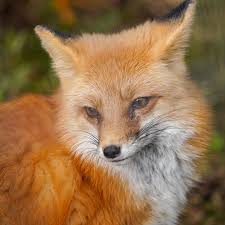Stamp: Red Foxes (Japan 2025)
Red Foxes (Japan 2025)
05 March (Japan ) within release My Journey Stamp Series No. 10 : Hokkaido (2025) goes into circulation Stamp Red Foxes face value 85 Japanese yen
| Stamp Red Foxes in catalogues | |
|---|---|
| Colnect codes: | Col: JP 2025.03.05-01h |
Stamp is square format.
Stamp from mini sheet.Also in the issue My Journey Stamp Series No. 10 : Hokkaido (2025):
- Stamp - Asahikawa City Zoo face value 110;
- Stamp - Cape Soya face value 85;
- Stamp - Cattle grazing face value 110;
- Stamp - Cheese and milk face value 110;
- Stamp - Farm Tomita face value 110;
- Stamp - Goryokaku face value 110;
- Stamp - Hachimanzaka face value 110;
- Stamp - Hakodate Night View seen from the Farm face value 85;
- Stamp - Higashimokoto Shibazakura Park face value 110;
- Stamp - Hokuryu Town Sunflower Village face value 85;
- Stamp - Kushiro Marsh face value 110;
- Mini Sheet - My Journey Stamp Series No. 10 : Hokkaido face value 10*85;
- Stamp - My Journey Stamp Series No. 10 : Hokkaido face value 85;
- Mini Sheet - My Journey Stamp Series No. 10 : Hokkaido face value 10*110;
- Stamp - Odori Park face value 85;
- Stamp - Otaru Canal face value 85;
- Stamp - Red Foxes face value 85;
- Stamp - Sapporo City Clock Tower face value 110;
- Stamp - Sea Urchin Salmon Roe Bowl face value 85;
- Stamp - Sheep Grazing face value 85;
- Stamp - Shimaenaga face value 110;
- Stamp - Soup Curry face value 85;
Stamp Red Foxes it reflects the thematic directions:
Foxes are small-to-medium-sized omnivorous mammals belonging to several genera of the family Canidae. They have a flattened skull; upright, triangular ears; a pointed, slightly upturned snout; and a long, bushy tail ("brush").
Mammals are any vertebrates within the class Mammalia (/məˈmeɪli.ə/ from Latin mamma "breast"), a clade of endothermic amniotes distinguished from reptiles (including birds) by the possession of a neocortex (a region of the brain), hair, three middle ear bones and mammary glands. All female mammals nurse their young with milk, secreted from the mammary glands. Mammals include the largest animals on the planet, the great whales. The basic body type is a terrestrial quadruped, but some mammals are adapted for life at sea, in the air, in trees, underground or on two legs. The largest group of mammals, the placentals, have a placenta, which enables the feeding of the fetus during gestation. Mammals range in size from the 30–40 mm (1.2–1.6 in) bumblebee bat to the 30-meter (98 ft) blue whale. With the exception of the five species of monotreme (egg-laying mammals), all modern mammals give birth to live young. Most mammals, including the six most species-rich orders, belong to the placental group. The largest orders are the rodents, bats and Soricomorpha (shrews and allies). The next three biggest orders, depending on the biological classification scheme used, are the Primates (apes and monkeys), the Cetartiodactyla (whales and even-toed ungulates), and the Carnivora (cats, dogs, seals, and allies).
Tourism is travel for pleasure or business; also the theory and practice of touring, the business of attracting, accommodating, and entertaining tourists, and the business of operating tours. Tourism may be international, or within the traveller's country. The World Tourism Organization defines tourism more generally, in terms which go "beyond the common perception of tourism as being limited to holiday activity only", as people "traveling to and staying in places outside their usual environment for not more than one consecutive year for leisure, business and other purposes". Tourism can be domestic or international, and international tourism has both incoming and outgoing implications on a country's balance of payments. Today, tourism is a major source of income for many countries, and affects the economy of both the source and host countries, in some cases being of vital importance.



